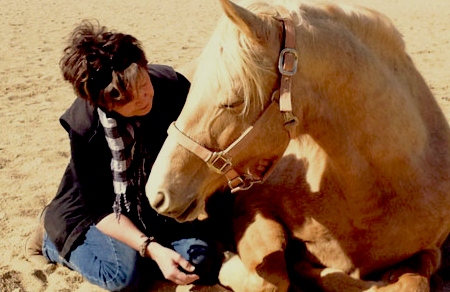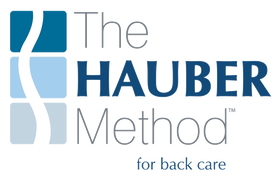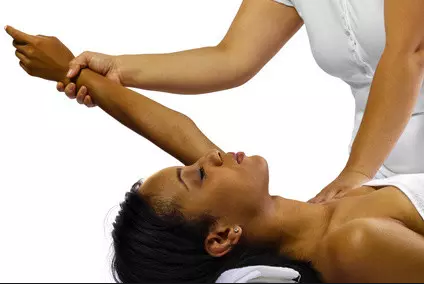5 Healing Modalities that Complement the Hauber Method™
The Hauber Method™ was designed to be the most effective series of progressive exercises and stretches leading to the relief or prevention of back pain.
As these success stories show, it works for many, many people with a whole variety of injuries and symptoms, no matter how long they have been in pain or how many other treatments they have tried.
But what if you have other healing modalities you like? Can you also engage in them while practicing the Hauber Method™? Which of them will help you on your journey to pain-free living?
In my experience, the following 5 therapies are wonderful complements to the Hauber Method™. I have used them all at various stages of my healing and growth. Engaging in them while also practicing the Hauber Method™ has been the key to my long-term success with pain-free living.
The first three complementary therapies or modalities I recommend are all super-effective means for lengthening tight tissues between and around joints. These tissues include muscles, fascia, and hard-to-work-with tendons and ligaments. They can become tight due to chronic poor posture or due to a one-time trauma or injury that never healed correctly.
In my experience, pelvic floor and tail-bone (coccyx) injuries respond especially well to myofascial release (MFR). Muscle adhesions around surgical sites or long-standing injuries in any part of the body can also benefit from MFR, physical therapy, and sports massage.
As these success stories show, it works for many, many people with a whole variety of injuries and symptoms, no matter how long they have been in pain or how many other treatments they have tried.
But what if you have other healing modalities you like? Can you also engage in them while practicing the Hauber Method™? Which of them will help you on your journey to pain-free living?
In my experience, the following 5 therapies are wonderful complements to the Hauber Method™. I have used them all at various stages of my healing and growth. Engaging in them while also practicing the Hauber Method™ has been the key to my long-term success with pain-free living.
The first three complementary therapies or modalities I recommend are all super-effective means for lengthening tight tissues between and around joints. These tissues include muscles, fascia, and hard-to-work-with tendons and ligaments. They can become tight due to chronic poor posture or due to a one-time trauma or injury that never healed correctly.
In my experience, pelvic floor and tail-bone (coccyx) injuries respond especially well to myofascial release (MFR). Muscle adhesions around surgical sites or long-standing injuries in any part of the body can also benefit from MFR, physical therapy, and sports massage.
1. Myofascial Release (MFR; especially the John Barnes technique): Best undertaken by a professionally trained practitioner with years of experience. I offer self-MFR as an important part of the Hauber Method™, but it can be much more challenging to inflict such pressure on oneself than to have a trusted professional apply the same pressure. Check this page to find a qualified MFR therapist near you.
2. High-quality physical therapy with an experienced physical therapist (PT): Look for someone with years of experience treating sports injuries. I was lucky enough to be a grad student at Purdue University, which has an amazing sports medicine program, after having had debilitating knee pain for almost 12 months. The PTs there--who were all professionals in training--fixed my knee pain in 2 short sessions. A few months before I started my grad school program, an orthopedic surgeon in Chicago had wanted to cut my leg open and cut a tendon to relieve the pain! Interview your potential PT and ask to speak to previous clients about their experience. Make sure the PT understands that you intend to heal yourself and NOT seek surgery.
2. High-quality physical therapy with an experienced physical therapist (PT): Look for someone with years of experience treating sports injuries. I was lucky enough to be a grad student at Purdue University, which has an amazing sports medicine program, after having had debilitating knee pain for almost 12 months. The PTs there--who were all professionals in training--fixed my knee pain in 2 short sessions. A few months before I started my grad school program, an orthopedic surgeon in Chicago had wanted to cut my leg open and cut a tendon to relieve the pain! Interview your potential PT and ask to speak to previous clients about their experience. Make sure the PT understands that you intend to heal yourself and NOT seek surgery.
|
3. Sports-specific or trigger point massage therapy: Look for someone with at least 5 years of experience doing intentional, targeted, deep work, rather than simple “relaxation” massage. In my experience, you will also benefit from receiving massage from a therapist who also has extensive training in additional healing modalities, such as shiatsu or myofascial work. I have been to probably 12 different massage therapists in the last 20 years, and the best ones have also been highly trained PTs, shiatsu therapists, or MFR therapists. The highest level of anatomy training is necessary to truly help relieve adhesions and tension in your muscles!
|
Sometimes gentle, sometimes more challenging, each of these 3 modalities has the potential to help you because, like the exercises and stretches taught in the Hauber Method™, they help you transform your posture from one that is stuck in an unhealthy, dysfunctional, or pain-inducing position into one that allows proper, healthy movement and freedom.
Receiving such body work and then practicing the Hauber Method™ daily is a powerful combination for helping you stop pain and keep it from coming back.
But what happens if your pain does not originate from a physical injury or trauma, but an emotional one?
Chronic physical pain often has an emotional origin.
If that is the case for you, the Hauber Method™, and the tissue-focused therapies above, are most effective when you also address the emotional contributors to your physical pain. The two therapies I have benefited from and highly recommend are:
Receiving such body work and then practicing the Hauber Method™ daily is a powerful combination for helping you stop pain and keep it from coming back.
But what happens if your pain does not originate from a physical injury or trauma, but an emotional one?
Chronic physical pain often has an emotional origin.
If that is the case for you, the Hauber Method™, and the tissue-focused therapies above, are most effective when you also address the emotional contributors to your physical pain. The two therapies I have benefited from and highly recommend are:
4. Eye Movement Desensitization and Reprocessing (EMDR): This therapy is the fastest way to heal trauma that I know of. In my view, one of the things that makes it so effective is that it works directly with the non-verbal, non-rational, emotional parts of our being. It’s impossible for me to explain how amazing this therapy is in such a brief forum as this one. But you should know there have been hundreds, if not thousands, of research studies in which EMDR has been shown to be effective for healing trauma (such as PTSD) that other therapies were not able to help.
Below, I’ve linked to the two most important sources of EMDR information for therapists and consumers. When finding an EMDR-qualified therapist, remember: (1) all therapists are different, and it might take a few tries before you find one you want to work with, (2) some therapists only offer EMDR therapy in specific cases, but you should find one who will use it as the main focus of therapy.
EMDR International Association: What Is EMDR Therapy
EMDR Institute, Inc.: What Is EMDR
Below, I’ve linked to the two most important sources of EMDR information for therapists and consumers. When finding an EMDR-qualified therapist, remember: (1) all therapists are different, and it might take a few tries before you find one you want to work with, (2) some therapists only offer EMDR therapy in specific cases, but you should find one who will use it as the main focus of therapy.
EMDR International Association: What Is EMDR Therapy
EMDR Institute, Inc.: What Is EMDR
 Simple activities like this one can help uncover and heal trauma. Horses are amazing.
Simple activities like this one can help uncover and heal trauma. Horses are amazing.
5. Equine-assisted psychotherapy (EAP): Another excellent way of accessing and helping heal the deepest sources of the emotional contributors to pain, equine-assisted therapy should only be done by a team including a licensed therapist and an expert horseperson certified with EAGALA or PATH.
Horses are prey animals. And because they don’t know human words/language, they react only to our true emotional states, which we often are not even aware of. This simple fact forms the foundation of one of the most profound healing experiences of my life--during an hour of EAP. I recommend meeting with your potential therapist, horse expert, and their horses prior to signing up for therapy. Once you do, be prepared to heal emotional wounds you never knew were affecting you.
Horses are prey animals. And because they don’t know human words/language, they react only to our true emotional states, which we often are not even aware of. This simple fact forms the foundation of one of the most profound healing experiences of my life--during an hour of EAP. I recommend meeting with your potential therapist, horse expert, and their horses prior to signing up for therapy. Once you do, be prepared to heal emotional wounds you never knew were affecting you.
I have personally experienced the power of both EMDR and EAP. At separate times in my life, they helped me heal very deep, very real wounds that were limiting my choices and actions.
When you find out your pain has an emotional root, and despite your very best efforts the Hauber Method™ has not eliminated your pain, please trust that either of those therapies has an enormous chance of helping you succeed (if you are truly ready to heal).
But do yourself a favor and try the Hauber Method™ first. It may very well be that it’s all you need to heal your painful back.
When you find out your pain has an emotional root, and despite your very best efforts the Hauber Method™ has not eliminated your pain, please trust that either of those therapies has an enormous chance of helping you succeed (if you are truly ready to heal).
But do yourself a favor and try the Hauber Method™ first. It may very well be that it’s all you need to heal your painful back.
"5 Healing Modalities that Complement the Hauber Method™," by Sara Hauber.
First published December 10, 2019.
First published December 10, 2019.
if you're ready to experience the magic of a the Hauber Method™ program, book an introductory online session with Sara today. You'll get immediate access to a free sample of Hauber's Heal Your Back Handbook as a gift!
Or, read more articles about the physical sources of pain and why the Hauber Method™ works to heal them.

